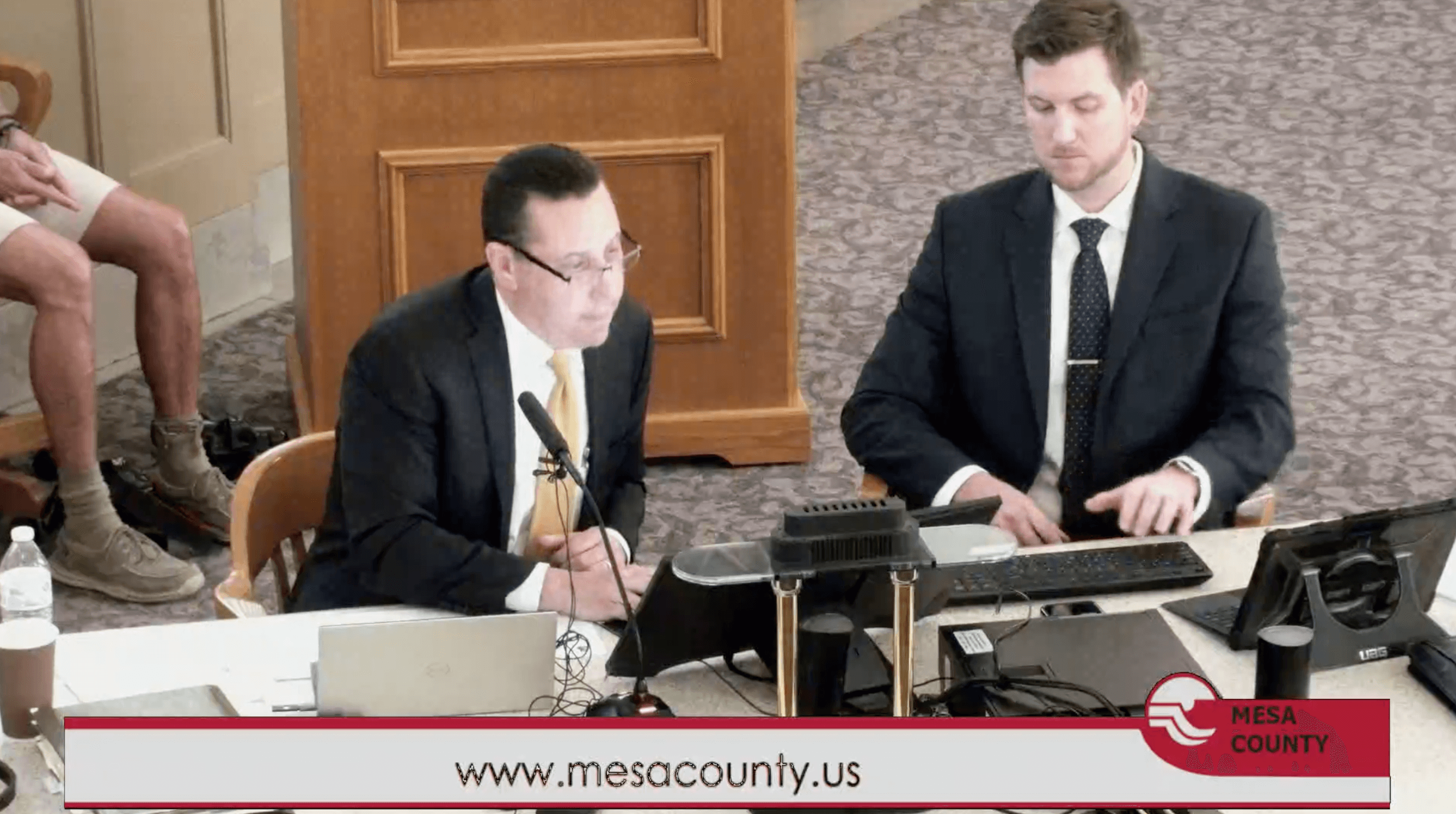
It came to attention while talking with a friend this morning that some people have misconstrued news reports about Mesa County District Attorney Dan Rubinstein’s recent investigation into election tampering (video, 1 hr, 12 min) and his subsequent statement that he will not be taking any legal action on Mesa County Clerk Tina Peters’ claim that criminal election fraud occurred in Mesa County.
Some people believe this statement, that no criminal activity was found, meant that Tina Peters has been exonerated of any wrongdoing.
That’s totally incorrect.
Rather, the D.A. looked for the criminal election tampering, whether by Dominion or any other entity, that Tina Peters charges happened in the 2020 and 2021 elections here in the County. Instead, his investigators found human error is at the heart of Peters’ charges, and that her claim that criminal activity altered the outcome of local elections is wholly mistaken.

Peters has published three “forensic” reports on her website, “TinaPetersForColorado.com,” that claim problems exist within Mesa County’s voting equipment: The first two reports point out how fraud could possibly have occurred, but the third report (pdf) claims fraud DID occur in the November, 2020 general election and the April, 2021 City election in Mesa County. The third report claims an extra “adjudication database”*** was nefariously created and that was “algorithmically triggered” by Dominion software.
Since tampering with election equipment would be a crime against all County residents, Rubinstein stepped in to examine Tina’s claims about the creation of this additional database.
Investigators did a painstaking job of examining these two elections in Mesa County, specifically looking for this extra database. They interviewed everyone who worked processing the elections; they learned how all the vote tabulating equipment works, what would appear on the computer screens at any given time and why. They examined every minute of surveillance video taken in the room where ballots are counted and they interviewed everyone who was in the room for both elections. They obtained phone logs and created a timeline of phone calls made to specific numbers and when; they investigated who owned the

phone numbers people in the election room dialed, and matched the calls to the video to find out who made the phone calls and why, and spoke to both the callers and the people who were called. They accounted for a tiny difference in times recorded by the voting equipment vs. the video cameras: The surveillance cameras in the elections room are motion-activated, so they stop recording for brief moments when no one in the camera’s field of vision is moving, or everyone is out of the room. These stoppages accounted for some of the discrepancy in the investigators’ timelines. They also found out that since none of the computers or voting equipment are connected to the internet, the equipment cannot self-correct for time periodically, like cell phones do. This makes the equipment more like a standalone wrist watch that gains or loses a few seconds every month. This is called “drift,” and it accounted for a small discrepancy in the timelines between the surveillance video, phone logs and vote tabulating equipment.
Rubinstein’s investigators were THAT thorough.
They did run into some problems, though.
Investigators got a lot of stonewalling from Tina Peters’ side of the investigation.

Tina refused to talk to the D.A.’s investigators, even though she was the one proposing problems exist with the ballot-tabulating equipment. The authors of Tina’s reports also refused to talk to the investigators, even though they were trying to show exactly where and how fraud had occurred. And while the authors of the report claimed to have conducted in-depth interviews of all of the employees and volunteers who work on Mesa County elections, none of those employees or volunteers reported ever having spoken with the authors of the reports.
The D.A.’s investigation revealed that Elections Department employee Sandra Brown, who has since been fired, created the mysterious extra adjudications database while she was attempting to fix a problem by re-booting a computer to fix a frozen screen. Tina’s reports allege the database could not possibly have been created by a human being, but the investigators found that was exactly the case: they were able to see Sandra Brown actually re-booting the computer and generating the new database on the surveillance video. They were able to see that human error caused the new database to appear. They found its creation was not malicious, but done to try to fix a frozen screen, and they found it did not affect the outcome of the election in any way.
Thus the D.A. found no basis for bringing any criminal charges against anyone, since there was no election tampering found and no criminal intent involved.
None of this exonerates Tina Peters, who still has criminal indictments pending against her for felony charges related to election tampering, identity theft and other charges.
———————–
***An “adjudication database” contains ballots marked in a way that confounds the ballot-reading machines, for example if a voter puts an “X” or other unusual mark over a bubble or in a margin, or writes in the name of a candidate who is not on the ballot. In those cases. The machine separates out those ballots and sends them to a separate database where two election judges can look at them to determine the voter’s intent. The database in which these ballots reside is called an “adjudication database.”

Excellent in-depth reporting! Thank you.
I got so much out of today’s information. Totally agree. Thanks Anne!
Tina is to blame for everything. She is horrible.
Good reporting by you- Peters and the Pillow cult will attempt to use the spin of ‘exoneration’ to imply / mislead / LIE re her culpability in her illegal actions